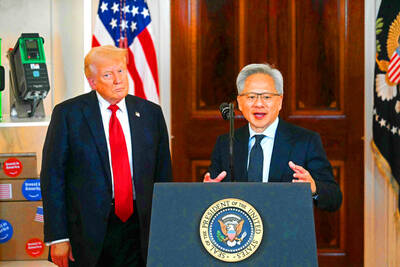Apple Inc’s share of the market for tablet computers fell to 50 percent in the third quarter as the iPad faced more competition from Android devices such as Samsung Electronic Co’s Galaxy tablets and Google Inc’s Nexus 7.
Apple still had a solid lead and shipped more iPads worldwide than a year earlier, Monday’s study by IDC showed. Apple had no new tablets out in the third quarter and also might have seen sales slow amid expectations of a smaller iPad.
Apple could regain share in the holiday quarter with last Friday’s release of new iPad devices, including the iPad Mini. The company on Monday said that it sold 3 million iPads of all kinds through the weekend, double the 1.5 million iPads sold in the first three days after Apple launched the third-generation iPad in March and cut the price of the iPad 2.
However, the company will face competition from new devices from Amazon.com Inc, Google and others over the next few weeks.
From July to September, Apple shipped 14 million devices, up 26 percent from 11 million a year ago. Its market share fell from 60 percent in the third quarter of last year as the overall tablet market grew by 50 percent to nearly 28 million.
Samsung’s market share grew to 18 percent from about 7 percent, as it more than quadrupled the number of tablets shipped to 5.1 million. The quarter saw the release of the Galaxy Note 10.1.
Amazon was third in the report with its Kindle Fire, which had a 9 percent market share. Amazon did not release a new version until late in the quarter, but it had nothing in the third quarter of last year because the Fire was not released until November that year, after the quarter ended. Amazon managed a 9 percent worldwide share even though the Fire was available only in the US during the third quarter.
No. 4 tablet maker Asustek Computer Inc (華碩), which makes the Nexus 7 for Google, saw its shipments more than triple to 2.4 million. It had a market share of 8.6 percent, up from 3.8 percent.
“Competitors are turning up the pressure on market leader Apple,” said Ryan Reith, a program manager for mobile devices at IDC.
Lenovo Group Ltd (聯想) was ranked fifth in the IDC report with 400,000 shipments and 1.4 percent market share.

Taiwan Semiconductor Manufacturing Co (TSMC, 台積電) last week recorded an increase in the number of shareholders to the highest in almost eight months, despite its share price falling 3.38 percent from the previous week, Taiwan Stock Exchange data released on Saturday showed. As of Friday, TSMC had 1.88 million shareholders, the most since the week of April 25 and an increase of 31,870 from the previous week, the data showed. The number of shareholders jumped despite a drop of NT$50 (US$1.59), or 3.38 percent, in TSMC’s share price from a week earlier to NT$1,430, as investors took profits from their earlier gains

AI TALENT: No financial details were released about the deal, in which top Groq executives, including its CEO, would join Nvidia to help advance the technology Nvidia Corp has agreed to a licensing deal with artificial intelligence (AI) start-up Groq, furthering its investments in companies connected to the AI boom and gaining the right to add a new type of technology to its products. The world’s largest publicly traded company has paid for the right to use Groq’s technology and is to integrate its chip design into future products. Some of the start-up’s executives are leaving to join Nvidia to help with that effort, the companies said. Groq would continue as an independent company with a new chief executive, it said on Wednesday in a post on its Web

CHINA RIVAL: The chips are positioned to compete with Nvidia’s Hopper and Blackwell products and would enable clusters connecting more than 100,000 chips Moore Threads Technology Co (摩爾線程) introduced a new generation of chips aimed at reducing artificial intelligence (AI) developers’ dependence on Nvidia Corp’s hardware, just weeks after pulling off one of the most successful Chinese initial public offerings (IPOs) in years. “These products will significantly enhance world-class computing speed and capabilities that all developers aspire to,” Moore Threads CEO Zhang Jianzhong (張建中), a former Nvidia executive, said on Saturday at a company event in Beijing. “We hope they can meet the needs of more developers in China so that you no longer need to wait for advanced foreign products.” Chinese chipmakers are in

POLICY REVERSAL: The decision to allow sales of Nvidia’s H200 chips to China came after years of tightening controls and has drawn objections among some Republicans US House Republicans are calling for arms-sale-style congressional oversight of artificial intelligence (AI) chip exports as US President Donald Trump’s administration moves to approve licenses for Nvidia Corp to ship its H200 processor to China. US Representative Brian Mast, the Republican chairman of the US House Committee on Foreign Affairs, which oversees export controls, on Friday introduced a bill dubbed the AI Overwatch Act that would require the US Congress to be notified of AI chips sales to adversaries. Any processors equal to or higher in capabilities than Nvidia’s H20 would be subject to oversight, the draft bill says. Lawmakers would have